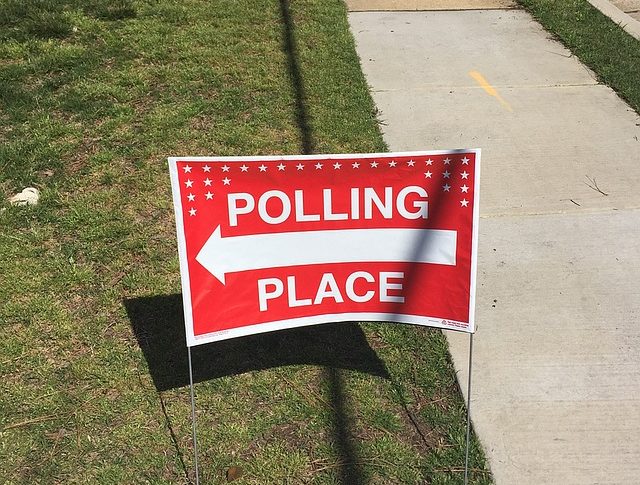Good Monday morning. It’s February 3rd. A busy political week kicks off today with the Iowa caucuses, the continuing impeachment trial of President Trump, and tomorrow night’s State of the Union address.
Today’s Spotlight is 1,603 words and takes about 6 minutes to read.
Want to chat about something you see here? Here is a contact form.
1. News To Know Now
1. Amazon is fighting charges that it pays no taxes. In a written statement Friday, the company said that it was subject to “over $1 billion in federal income tax” and $4 billion in payroll, property, and state taxes. The company famously avoided paying taxes last year. This year’s statement comes a day after Amazon announced record-breaking revenue of $88 billion in the fourth quarter. Amazon also announced that it now has 150 million Prime customers worldwide.
2. Some users of product management software Trello are in for an unhappy surprise. The collaborative task management software uses a default public setting that search engines index. The exposed data includes performance ratings of hundreds of Regus employees, a second board showing personal identification such as lab coat sizes and passwords, and a third company’s board that includes salary, bonus, and contract information. Naked Security has the details.
3. The coronavirus has captured the world’s attention in a way that much more deadly and commonplace influenza never does. Here is a CDC chart showing influenza in the U.S. since 2010. This year’s data is incomplete but the CDC says that 10,000 Americans have died and 180,000 been hospitalized for now-widespread influenza as of January 25.
Pro tip: you can still get a flu shot. It can’t hurt. It may help.
But if you want to see what the online world is doing about coronavirus, Google launched their SOS alert that flags searches related to coronavirus, Facebook announced it is removing false information about the coronavirus, and BlueDot, which uses an AI algorithm that checks foreign news reports and animal and plant disease networks, identified Coronarivus on December 31 — seven days before the CDC and 9 days before the WHO. Score one for us nerds.

2. Facebook Facial Recognition Suit Settled
Facial recognition continues to occupy regulators and activists. Big news erupted this week when Facebook agreed to settle a five year old class action suit for $550 million after losing on appeal. The federal suit was filed in Illinois on behalf of Illinois users whose faces were used to prompt others to tag them in photographs. Those users may now receive up to “a couple of hundred dollars each”, the Chicago Tribune reports.
Despite the large settlement, Facebook posted $7.3 billion in quarterly net income and $18.5 billion for 2019 on $71 billion in revenue. Grandpappy always used to say, “George get yourself a 26% business with a bigger economy than five states.”
The EU was considering banning facial recognition technology use in public places, but has said that it will look for “clear criteria” when it is used. Former EU city London seemingly has no such qualms and is deploying live facial recognition throughout the city to look for “wanted individuals” regarding serious crimes.
The incidence of misidentification especially of nonwhite people continues to be a problem for existing technology. A federal study released in December says that Native American, Asian and African American people were up to 100 times more likely to be misidentified than white males.
The U.S. military already uses facial recognition but has at least two multimillion dollar projects developing long range facial recognition that would also work in the dark. The DoD project guidelines call for a portable device that works up to 500 yards away. Unlabeled output from MRI devices is also being successfully matched in databases of volunteers.
Smart links: Facebook and facial recognition
“Facebook May Pay Illinois Users …” at the Chicago Tribune
“EU No Longer Considering …” at Biometric Update
“London to Deploy Live Facial Recognition …” at Ars Technica
“Federal Study Confirms Racial Bias …” at the Washington Post
“The Military is Building Long-Range Facial …” at OneZero
“ … Identify Patients from MRI Scans” at The Wall Street Journal
3. Google Search Updates
Don’t believe me. Believe Google’s new video, “Top 5 Things To Consider For Your Website.” The fifth item in that video is to hire a search engine optimization expert. I think that is terrific advice, and we happen to be looking for a new client to start in February, so forward this to someone you think that we should be working with and suggest that you introduce us. Your friend or colleague will thank you, and I already do.
Google also updated its best practices documentation for mobile-first indexing with a significant amount of information. Some important things to note are keeping content consistent between mobile and desktop displays, using the same title tags and other meta tags behind the scenes, and a huge troubleshooting section.
You can read all of the changes at Search Engine Journal or you can introduce yourself to a great search agency.
4. Debugged: Coronavirus Misinformation
Remember: U.S. influenza deaths: 10,000 this flu season. Coronavirus deaths: 362, including one outside of China.
The coronavirus has not been patented, there are many strains of coronavirus, and it wasn’t started by a comedian.
Fact Check has more debunked nonsense.
5. Also in the Spotlight: Lady Gaga
One of my favorite recent stories describes Lady Gaga’s fans sleuthing her new website to find the title of her upcoming song. They had already spotted the title on an Instagram post last October and confirmed it was hidden in the text of her website.
Daily Dot has the story about Gaga’s little monsters.
6. Great Data: Name Guesser
We’ve written before about Nathan Yau at Flowing Data. One of his recent projects involves a “name guesser” that uses the decade a person was born and their gender to begin guessing their first name.
Nathan describes how he uses publicly available first name data from the Social Security Administration to guess the name. Don’t type anything and you’ll see the most popular letters. Add the first letter, and the choices quickly narrow. Add a second letter to get even closer.
The project is a nice look behind the scenes at how something interesting can be pulled together with great data that is often free and readily available.
Check it out here. You don’t even have to buy a vowel.
7. Protip: Translating in Spreadsheets
If you work at an organization where employees use more than one language, you need to know that Google Sheets has a built-in translation function. Now when you get a spreadsheet with non-English data, you can translate close enough right inside the spreadsheet.
Here is the support page at Google Sheets.
8. Following Up: Avast and AVG Antivirus
We’ve told you countless times not to use Avast and AVG Antivirus software. You probably know the saying that you are the product when the product is free.
Motherboard Vice broke the story last week that Avast sold entire clickstream data from its users. The data was billed as “Every search. Every click. Every buy. On every site.” And the buyers were top corporate names including Pepsi and Home Depot as well as tech giants like Google and Microsoft.
Here is what Avast’s subsidiary Jumpshot delivered as part of a package that Vice examined:
Google searches, lookups of locations and GPS coordinates on Google Maps, people visiting companies’ LinkedIn pages, particular YouTube videos, and people visiting porn websites. It is possible to determine from the collected data what date and time the anonymized user visited YouPorn and PornHub, and in some cases what search term they entered into the porn site and which specific video they watched.
There are good uses for this data. Tools used by marketing firms rely on some of this information to see what search results people click on. Ad Age called the company ” … a place to get unparalleled insights into online behavior.” Search marketer Rand Fishkin accurately said that the data helped businesses of all sizes understand what Amazon, Facebook, and Google were actually doing.
All of this is fair, but only when someone agrees to use the free software in exchange for their information being stripped of obvious identifiers and sold.
9. ICYMI — Top links from the past 30 days
How to Stop Google Maps from Tracking You at CNBC
Coronavirus Mapping by Johns Hopkins University
Microsoft Launches Tool to Identify Child Sex Predators at NBC News
10. Coffee Break: The Jeopardy Archive
Lady Gaga’s fans have nothing on fans of the Big J.
A crowd sourced site has an archive of Jeopardy clues of this iteration of the show dating back to Alex Trebek’s pilot in 1983 and 44 of the show’s first episodes the next year.
They’re arranged exactly as they appear on the clue board. It’s … overwhelming.
When you’re done, click here for a free Spotlight subscription.


